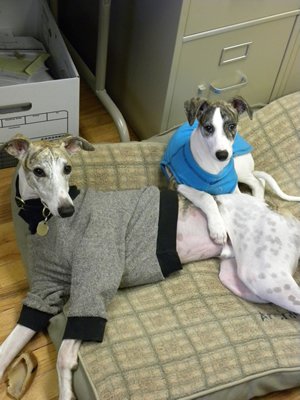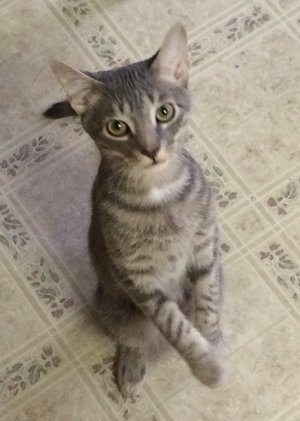THE CHANGING FACE OF VETERINARY MEDICINE

Overview
Over and during the past 40 years, veterinary medicine in America has changed & morphed in a number of different ways. The change and the changes that have transpired over this time are really quite amazing, and they were previously unthinkable/unfathomable to those veterinary docs who have practiced through them. We confine these thoughts to companion animal (small animal) medicine and practice.
Countless have been the improvements, advances, & inventions in diagnostic techniques, drugs, therapeutic regimes, instrumentation, & preventive care in small animal medical & surgical care. All of these contribute to an increased level of wellness care available today for our pets. This and these are good things.
Also - very much distinct from new drugs & therapy - there has been and continues to be great change in the delivery system of care to you (the client) & to your pet (the patient). Veterinarians are aware of this great practice delivery system change, but the veterinary awareness is proportional to veterinary years in practice. Think about that for a moment. Pet owners are not so aware of this – nor should they necessarily be. But they/you (the pet owner) will eventually see & be very much a part of these changing times & systems.
The Changes

![]() One change - there is a slow but ongoing demise of small practices. Older veterinarians are retiring, and/or they are working less, and/or they are working part-time for larger practices. Some of the smaller practices are sold to young veterinarians, some are closing their doors, and some are merging into larger practices. In the next 3-7 years, a number of small practices will just close their doors as the older docs retire. This is unprecedented in America. It is happening today, and will accelerate according to the above time frame.
One change - there is a slow but ongoing demise of small practices. Older veterinarians are retiring, and/or they are working less, and/or they are working part-time for larger practices. Some of the smaller practices are sold to young veterinarians, some are closing their doors, and some are merging into larger practices. In the next 3-7 years, a number of small practices will just close their doors as the older docs retire. This is unprecedented in America. It is happening today, and will accelerate according to the above time frame.
Decades ago, such practices would have been purchased/taken over by young veterinarians. But now – not as much so. A main reason being a disinclination on the part of the younger docs to work at the level of the older docs – hours worked per week, emergency coverage, lack of vacation time, & minimal personal time. The younger/newer docs are the smart ones.
![]() Another change - practices are getting larger. Again because newer and younger veterinarians simply decline to work the long and crazy hours and schedules the older docs used to work, the work load is less in a larger practice, as there are more people to depend on. The younger/newer docs are the smart ones.
Another change - practices are getting larger. Again because newer and younger veterinarians simply decline to work the long and crazy hours and schedules the older docs used to work, the work load is less in a larger practice, as there are more people to depend on. The younger/newer docs are the smart ones.
![]() Another change - purchase of larger practices by corporations. Across America there are a number of corporations purchasing veterinary practices. This is simply business – it has nothing to do with the warmth and fuzziness of our pets. The corporate goal is quite simple - to make a profit. You will be the first to know when your practice has sold to a corporation. The corporations seem to be the smart ones.
Another change - purchase of larger practices by corporations. Across America there are a number of corporations purchasing veterinary practices. This is simply business – it has nothing to do with the warmth and fuzziness of our pets. The corporate goal is quite simple - to make a profit. You will be the first to know when your practice has sold to a corporation. The corporations seem to be the smart ones.

![]() Another change - the creation of megahospitals. There are now across America a number of veterinary megahospitals – these are very large places staffed 24 hours per day, full of specialists & a whole lot of sophisticated equipment & instrumentation. New Jersey has a number of these. These are a whole new veterinary world. They virtually did not exist, other than at veterinary schools, up to about 15-20 years ago. A whole new world. The megahospitals seem to be the smart ones.
Another change - the creation of megahospitals. There are now across America a number of veterinary megahospitals – these are very large places staffed 24 hours per day, full of specialists & a whole lot of sophisticated equipment & instrumentation. New Jersey has a number of these. These are a whole new veterinary world. They virtually did not exist, other than at veterinary schools, up to about 15-20 years ago. A whole new world. The megahospitals seem to be the smart ones.
![]() Another change –this one in human medicine. Currently in the human health care system, small physician practices are diminishing in number (sad). More physicians are avoiding small groups to join larger groups. For the exact same reasons as with vet med. These changes are anticipated to limit access to care. The smart ones here?
Another change –this one in human medicine. Currently in the human health care system, small physician practices are diminishing in number (sad). More physicians are avoiding small groups to join larger groups. For the exact same reasons as with vet med. These changes are anticipated to limit access to care. The smart ones here?
The changes in vet med are large and ongoing. They definitely are affecting how veterinarians practice. And they will affect in a number of different ways, how care is delivered to you and to your pet. These changes are real, they are ongoing, and they are unstoppable.
It has been said by a good friend of Dr. Wayne. “These changes are not good. These changes are not bad. These changes simply are."
 Human Hospitals & Veterinary Hospitals
Human Hospitals & Veterinary Hospitals
Dr. Wayne has said many times the following. Take say 100 human hospitals & take 100 veterinary hospitals. Go visit all of them. First visit the 100 human hospitals, then go visit the 100 veterinary hospitals. What you will find is this. For the most part the 100 human hospitals you will find to be remarkably similar. OK. The 100 veterinary hospitals, on the other hand, you will find to be very dissimilar - they are amazing different, breathtakingly so, and in many ways from A to Z. That is just the way it is in our field. The point, you ask & wonder – well, read on.
What Works for You
Decide what type of practice works for you. Veterinary practices differ & vary in a myriad of ways. This is not always so obvious to you - the pet owner. Different pet owners need & want & desire & request all sorts of different things from a veterinary hospital. This is good & it is OK. But you need to make certain that perception and reality are the same.
Sooo - you need to pick the facility & the staff which best suits and works best for you. Once you have found/selected your place, then you need to patronize it & support it. With your support your hospital is more likely to stay. And with your support, and even more importantly - it is more likely to stay similar to the way it you want it be.

